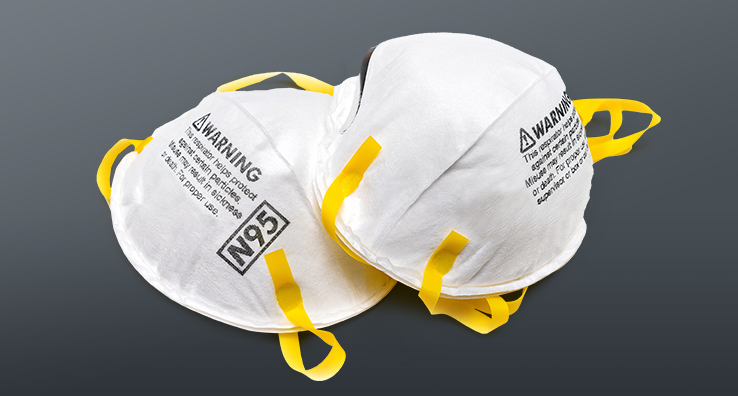COVID-19 and N95 Masks: What Does OSHA Say?

We’ve received many questions regarding OSHA regulations and the use of N95 masks in the workplace for protecting personnel from COVID-19, and whether the respiratory protection standard applies.
The short answer is yes. Generally, all the OSHA requirements for respiratory protection still apply, including for use of N95 masks, although exceptions have been allowed given the extraordinary circumstances. For example, OSHA has issued temporary enforcement guidance specifically for healthcare providers which relaxes annual fit testing requirements, in order to preserve and prioritize the supply of respirators. All other requirements including initial fit testing are still mandatory. According to OSHA, appropriate respiratory protection is required for all healthcare personnel providing direct care of patients with known or suspected COVID-19.
You can read this temporary enforcement guidance here.
Important Differences Between N95 masks and Surgical Masks
Note that a surgical mask is not the same thing as an N95 mask. Surgical masks are not tight-fitting and don’t provide the same protection as N95 masks. The rules for their use are different. For a quick comparison, please read this CDC guidance that provides more detail.
N95 masks are tight-fitting, and if workers are required to wear them in the course of doing their work, the employer must implement all requirements under the standard including having a written respiratory protection program, providing the masks, medical fitness testing, and initial and recurring fit testing. If employees choose to wear these masks voluntarily, the employer must:
- ensure that such use will not itself create a hazard;
- implement the elements of a written respiratory protection program necessary;
- ensure that employees voluntarily using such respirators are medically fit to do so;
- ensure that the respirators are cleaned, stored, and maintained so that their use does not present a health hazard to the users.
Applying the Hierarchy of Controls
OSHA has published Guidance on Preparing Workplaces for COVID-19, which you can download here for more information. It’s recommended that anyone who has occupational health and safety responsibility in their organization read this guidance document. It addresses the virus, steps we can take to reduce worker risk, classification of worker exposure, protective measures, and personal protective equipment.
Again, in the absence of any special exemptions, the requirements of the respiratory protection standard 29 CFR 1910.134 remain in force. As we take steps to protect ourselves from COVID-19 and other airborne contaminants, we will get more mileage by applying the hierarchy of controls. This is a requirement under OSHA. Here’s a quick example, with some overlap between levels:
Elimination: Do we need to be around other people right now? If not, don’t.
Substitution: Is there another way we can get our work done without exposing people? If so, do it.
Engineering: Can we separate people from viral exposure through barriers, ventilation, disinfection, etc.? Almost always.
Administrative: Can we make up rules and procedures for people to follow to avoid becoming infected or spreading the virus? Yes, we’re already doing it-do more.
Personal protective equipment? Yes, that’s what we’re talking about here with respiratory protection. PPE is a last resort, but sometimes it needs to be used, either by itself or in combination with other hazard controls. If we’re going to use it, we should follow the rules.
Be Mindful of N95 Usage
Also, please be sensitive to the fact that there is currently a shortage of N95 masks in some areas, and we need to make sure that they’re available to people who have a real need.
Thanks for reading. Be safe!
Rick Gehrke is a Senior Environmental Safety and Health Consultant and certified management systems Lead Auditor with experience in ISO 14001, OHSAS 18001, ISO 45001, ISO 50001, LEED green building certification, business development, and certification program management.





